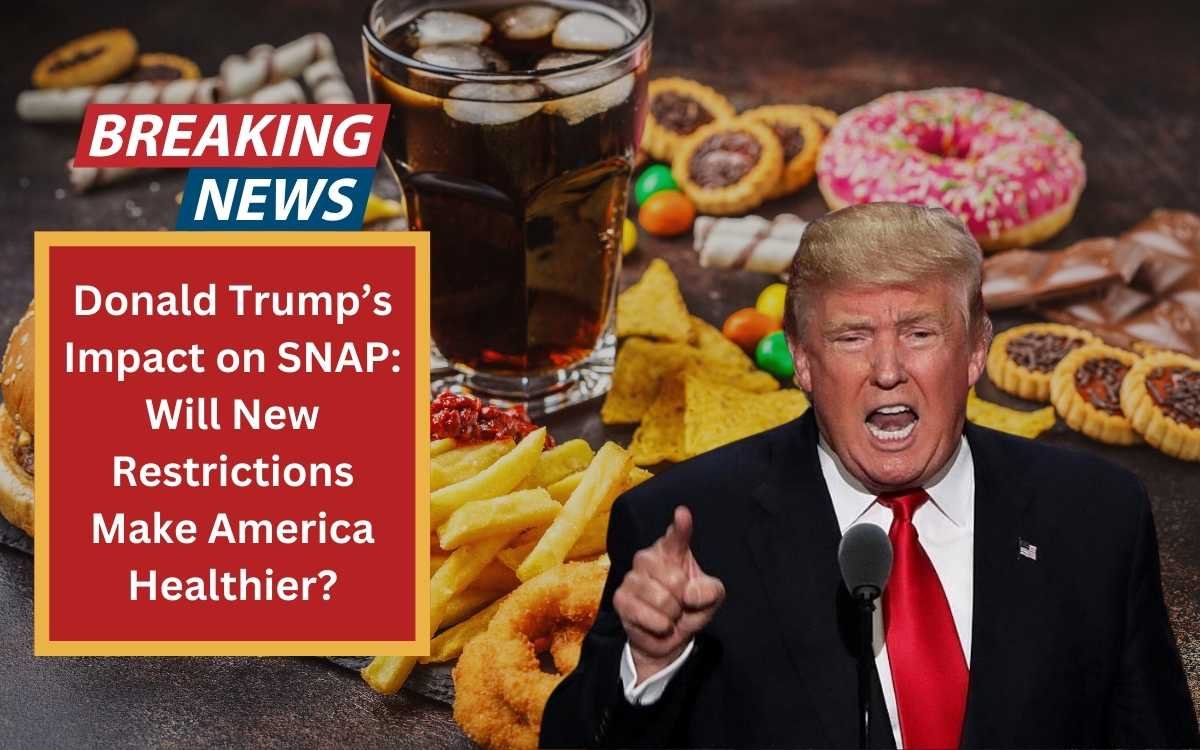The Supplemental Nutrition Assistance Program (SNAP) a critical safety net for over 42 million Americans has once again become a focal point of national debate.
Proposed changes under Congressman Josh Brecheen’s Healthy SNAP Act and policy discussions surrounding Donald Trump’s administration highlight an ongoing effort to reform the program. Advocates argue that these measures promote health while critics question their fairness and impact on low income families.
What Is SNAP and Why Reform Is Controversial?
SNAP provides monthly benefits to low-income households to purchase food ensuring millions of Americans avoid hunger. However, the program has long been criticized for allowing the purchase of unhealthy items like sugary drinks, candy and processed foods.
Congressman Brecheen’s Healthy SNAP Act aims to align SNAP purchases with federal dietary guidelines eliminating items like soft drinks and candy. Similarly, under Trump’s administration discussions surrounding SNAP reforms gained traction. Trump’s pick for Health and Human Services Director, Robert F. Kennedy Jr., advocated for stricter junk food bans in SNAP to “Make America Healthy Again.”
While proponents argue that such restrictions could combat obesity and reduce healthcare costs critics highlight that unhealthy eating is a nationwide issue not limited to SNAP recipients.
SNAP Benefits: More Than Just Nutrition
SNAP supports vulnerable populations, including families with children, seniors and disabled individuals. The average monthly benefit is $195 per person which helps offset food costs but often falls short of covering a household’s monthly grocery needs.
Critics of proposed restrictions argue that limiting food choices could stigmatize recipients further. Research shows that unhealthy food consumption occurs across all income levels and access to nutritious foods is often hindered by financial and geographic barriers.
Instead of imposing restrictions, alternative solutions like matching programs for fruits and vegetables have shown promise in improving dietary habits without restricting individual choice.
Key Facts About SNAP and Proposed Reforms
| Aspect | Details |
| Beneficiaries | 42+ million Americans |
| Current Restrictions | No alcohol, tobacco, restaurant meals, or non-food items |
| Proposed Changes | Ban on sugary drinks, candy, ice cream, and desserts |
| Average Monthly Benefit | $195 per person |
| Criticism of Reforms | Potential stigma, limited impact on overall health |
Donald Trump’s Role in the Debate
Donald Trump’s administration prioritized reforms to major federal programs including SNAP. While many of his proposals aimed to cut costs, they also introduced measures targeting public health. By advocating for restrictions on unhealthy foods in SNAP Trump reinforced his broader health focused agenda.
However, critics have argued that these measures fail to address the root causes of poor nutrition, such as income inequality and limited access to healthy foods in underserved communities.
To easily update or cancel your SNAP enrollment, you can follow the steps outlined in this guide on How to Update or Cancel Your SNAP Enrollment Easily.
FAQs About Donald Trump’s Impact on SNAP
1. What is the goal of the Healthy SNAP Act?
The Healthy SNAP Act aims to align SNAP-eligible food items with federal dietary guidelines, reducing purchases of sugary and processed foods.
2. How could SNAP reforms impact recipients?
Proposed reforms may limit food choices, potentially stigmatizing recipients, while aiming to promote healthier eating habits.
3. What role did Donald Trump play in SNAP reforms?
During his administration, Trump supported stricter food restrictions in SNAP, framing them as a way to improve public health and reduce healthcare costs.
